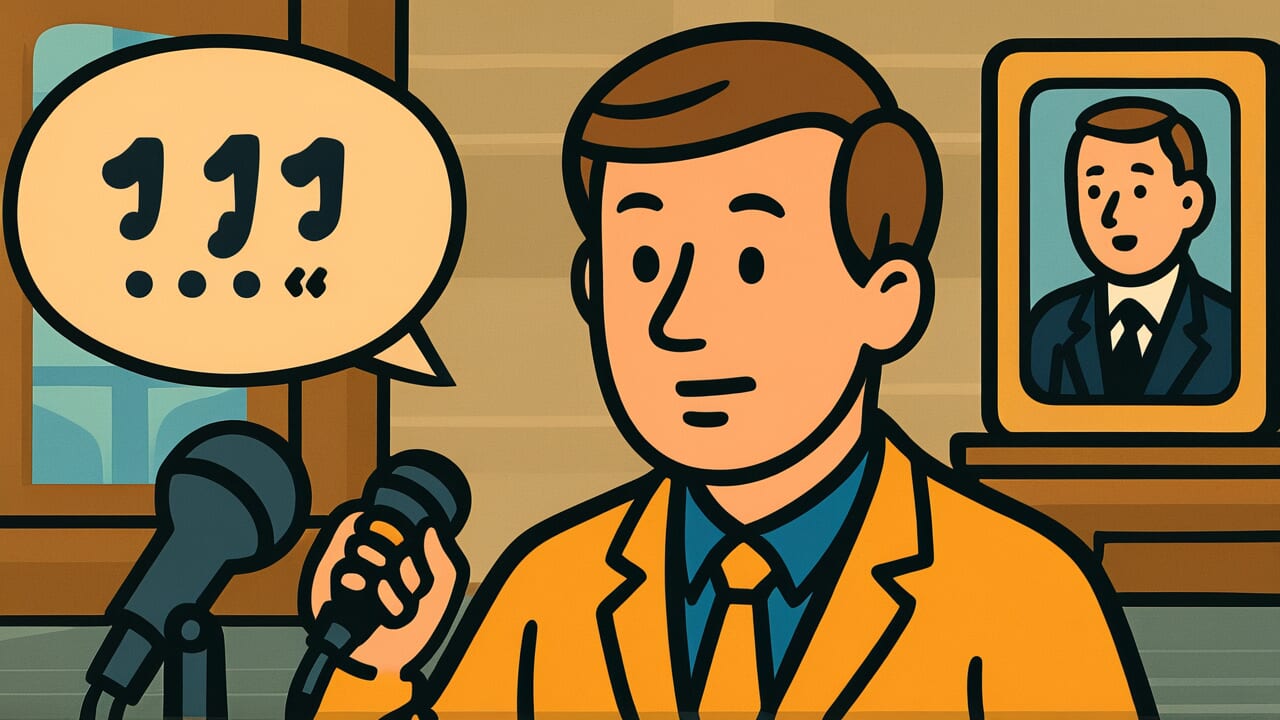How to Read “Good at talking, poor at speaking”
hanashijōzu no kuchibeta
Meaning of “Good at talking, poor at speaking”
The meaning section could not be generated.
Origin and Etymology
There don’t seem to be clear written records about the origin of this proverb. However, we can make interesting observations from how the words are put together.
The expression combines two seemingly contradictory terms: “good at talking” and “poor at speaking.” This shows the fascinating nature of the Japanese language.
Normally, being good at talking and being poor at speaking are complete opposites. But this proverb deliberately connects them to express a deeper truth.
This expression likely emerged from the practical spirit of merchant culture during the Edo period. Merchants of that time valued clear, simple explanations over fancy speech.
The ability to communicate essentials without unnecessary decoration was what mattered in actual business. Getting straight to the point was more important than flowery language.
The influence of bushido cannot be overlooked either. Among samurai, “conveying one’s heart with few words” was considered a virtue.
Being too talkative was seen as a sign of superficiality. This value system spread to merchant culture as well.
It crystallized into the paradoxical wisdom that “a truly good talker is someone who appears poor at speaking.”
This expression embodies the Japanese aesthetic that values essential simplicity over superficial eloquence. True speaking skill lies not in verbal cleverness but in capturing the essence concisely.
Usage Examples
- He’s good at talking, poor at speaking—he doesn’t say much in meetings, but he clearly conveys what needs to be said
- That teacher’s lessons are good at talking, poor at speaking—she doesn’t use difficult words, but you understand the essence right away
Universal Wisdom
The proverb “Good at talking, poor at speaking” contains deep wisdom about the essence of human communication.
We humans are easily fooled by the surface beauty and fluency of words. When we see someone speak eloquently, we instinctively think “this person is excellent.”
However, looking back at history, there are countless examples of people who deceived others with beautiful words. Conversely, many people spoke few words, yet each word carried weight and moved people’s hearts.
This proverb has been passed down through generations because humans instinctively tend to confuse “quantity of words” with “power to communicate.”
The more you speak, the harder it becomes to see the essence. The more decoration you add, the more the core message gets hidden.
Our ancestors recognized this contradiction. They understood that excessive talking often obscures rather than clarifies.
True communication is about reaching someone’s heart. For that, you need to abandon the desire to make yourself look good.
You need the honesty to simply convey what needs to be conveyed. Even if you appear poor at speaking, that honesty becomes the key to opening people’s hearts.
This is a truth about human relationships that doesn’t change no matter how times change.
When AI Hears This
In information theory, there’s a fundamental dilemma: the more you compress data, the more efficient transmission becomes, but the more vulnerable it is to noise.
For example, if even one bit of a ZIP file is corrupted, the entire file won’t open. The same thing happens in human conversation.
People who are poor at speaking send highly compressed information—”just the conclusion” or “only the main points.” This is efficient from an information theory perspective.
But if even a little noise enters—the listener’s mood, fatigue level, or preconceptions—the message won’t arrive correctly.
When someone says “I understand” but actually misunderstood, it’s like compressed data experiencing a decompression error.
On the other hand, people good at talking rephrase the same content multiple times, insert concrete examples, and lighten the mood with jokes.
This is what information theory calls “adding redundancy.” In communication engineering, it’s known as error correction coding.
You deliberately inflate the data to make it resistant to noise. Cell phone conversations remain understandable even when they break up because of this redundancy.
The roundabout expression good talkers use—”Yesterday, you know, at the station, um, that ramen shop”—seems to have zero information content.
But it’s actually sophisticated encoding that performs reception confirmation and error correction simultaneously.
They read the “feedback signal” of the other person’s facial expression while adjusting redundancy in real time.
This isn’t just chattering. It’s transmission technology optimized for the noise-filled communication channel of human relationships.
Lessons for Today
What this proverb teaches modern people is the essence of “the power to communicate.”
Now that social media and presentations are part of daily life, we tend to focus on “how we appear.” But what truly matters is “what we convey” and “whether it reaches the other person.”
When you explain something to someone, you don’t need to search for perfect phrasing. Rather, try to convey things simply and honestly in your own words.
It’s okay to stumble over your words. That honesty itself has the power to reach the other person’s heart.
Also, when listening to others, don’t be fooled by superficial fluency. What’s truly valuable is the content—what that person is trying to convey.
Sometimes deep truths are hidden in the words of people who appear poor at speaking. Look beyond the surface to find the real message.
The essence of communication is not decoration but connection. This proverb gives us the “courage to communicate” in the truest sense.
You don’t have to be perfect. You just have to be sincere. When you realize this, your words will surely reach the other person’s heart.



Comments